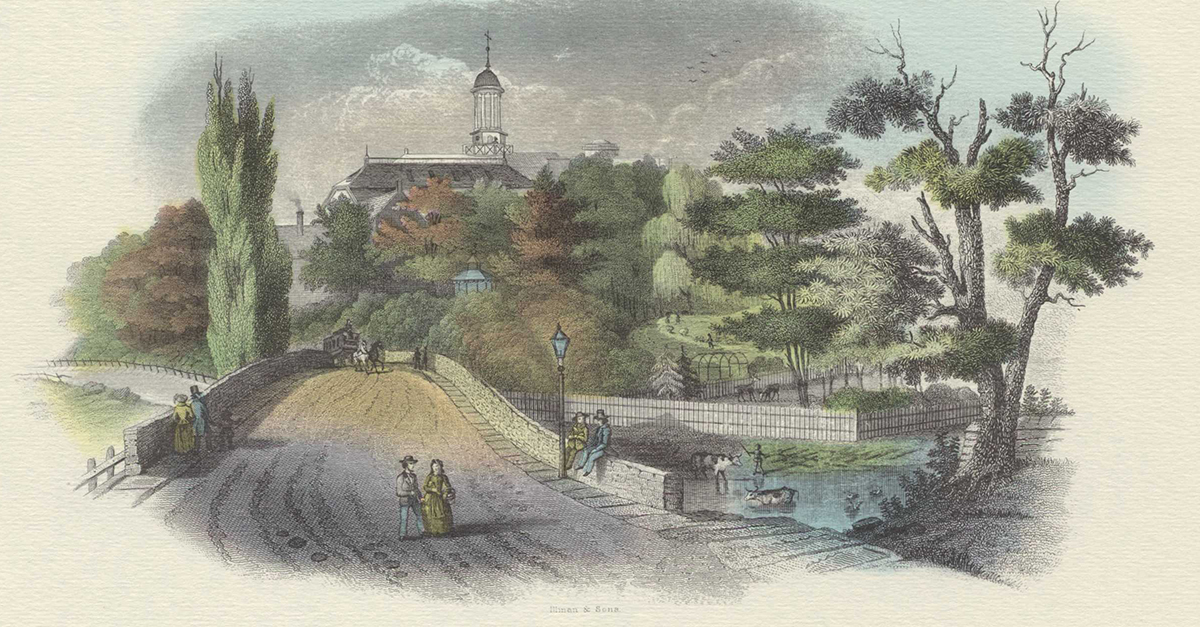
Moravian Moment
The Pleasure Grounds: A Delightful Retreat
By Nancy Rutman '84
When the Bethlehem Female Seminary relocated to the Brethren’s House in 1815, the grounds surrounding the building probably retained much of their Colonial-era appearance. Utilitarian outbuildings claimed the space immediately south of the buildings that lined Church Street; kitchen and medicinal gardens and orchards stretched out below. As the community modernized and some of these functions became obsolete, however, more and more of the grounds were converted to recreational purposes. In 1852, the seminary purchased the “Sisters’ Hill” to the east of the school grounds and laid it out in walks.
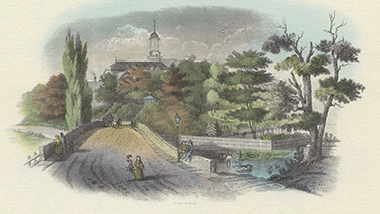
Visitors arriving in Bethlehem from the south in the 1850s were greeted with a view of the seminary Pleasure Grounds as they crossed the Monocacy Creek at the south end of Main Street.
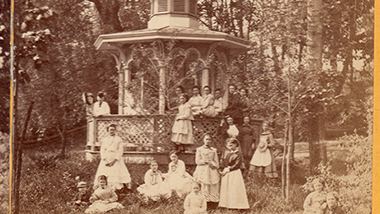
This ornate Victorian-style gazebo, photographed in September 1871, offered young ladies a shady retreat.
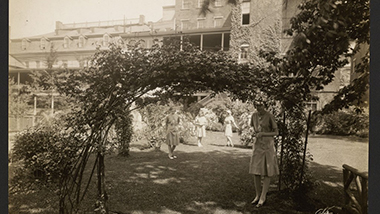
A rose garden with arbor on the lawn south of Main Hall created an Instagram-worthy setting for snapshots to send home to friends and family in the 1930s.
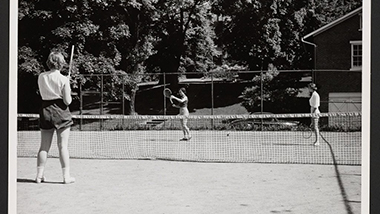
Tennis players enjoy a game on one of the clay courts south of the 1840 Day House in the late 1940s or early 1950s.
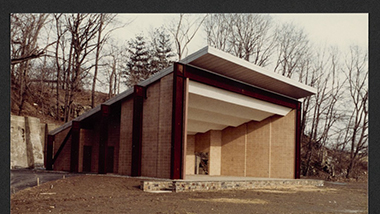
Dedicated in 1982, the Community Arts Pavilion (aka Kunstplatz) hosted musical performances each year during Musikfest. It was removed in 2008 to make way for The HILL academic and housing complex.
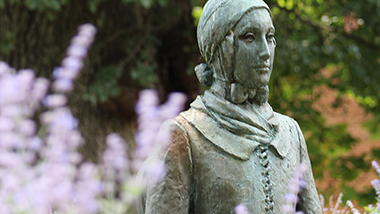
A bronze sculpture of Benigna Zinzendorf by Minnesota artist Michael Price, dedicated in 1992, sets a peaceful tone for the Pleasure Grounds in 2017.
By 1854, when Main Hall was built, the Pleasure Grounds along the Monocacy were a well-known feature of the Bethlehem landscape. “Within the past years much labor has been expended upon the [grounds adjoining the new building],” wrote Bishop William C. Reichel in 1858. “The yard has been overlaid with greensward and planted anew with evergreens and shadetrees. The plot thus beautified has been incorporated with the pleasure-grounds below, and together they afford a convenient and delightful retreat from the noise and crowd of the schoolroom. Here the young ladies are wont to resort and pass the leisure hours of the warm summer’s day; and as the wayfarer passes without, he hears the gay laugh of youthful mirth, the hum of voices, or perchance the notes of song as some maiden chants the remembrance of distant home and absent friends.”
As women began to participate in sports in the 20th century, the school added tennis and basketball courts and a hockey field to the Pleasure Grounds. After the women’s and men’s colleges merged in the 1950s, many of these activities were transferred to the Main Street Campus, and the grounds returned to more passive uses. The HILL complex and Foy Concert Hall now take up part of the space, but a small remnant, now known as the Benigna Garden, serves as a reminder of gentler times.
